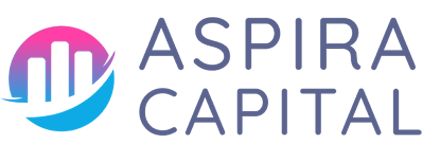Table of Contents
- The Importance of Strategic Planning
- Conducting a SWOT Analysis
- Defining Your 2025 Goals
- Developing a Business Roadmap
- Focusing on Financial Objectives
- Leveraging Technology for Efficiency
- Utilizing Productivity Hacks
- Ongoing Evaluation and Adaptation
- Building a Resilient Company Culture
The Importance of Strategic Planning
Effective strategic planning is the cornerstone for any business aiming for business success in 2025. Planning allows businesses to set clear objectives and provides a structured approach to achieving them. A well-thought-out strategy lays the groundwork for the company strategy that aligns with long-term growth expectations.
Key Components of Strategic Planning:
- Vision and Mission Statement: Clearly define what your business stands for.
- Market Analysis: Understand your customer needs and industry trends.
- Competitor Analysis: Identify your competition’s strengths and weaknesses.
- Resource Allocation: Determine how resources will be distributed to meet goals.
Conducting a SWOT Analysis
A comprehensive SWOT analysis is essential for evaluating both internal and external factors that can affect your business. This involves assessing your company’s strengths, weaknesses, opportunities, and threats. It provides valuable insights for informing your strategic planning.
Steps to Conduct a SWOT Analysis:
- Identify Strengths: What advantages does your business have?
- Reveal Weaknesses: What internal factors could hinder growth?
- Explore Opportunities: What external factors can be leveraged for success?
- Assess Threats: What external challenges does your business face?
Defining Your 2025 Goals
Setting clear, actionable 2025 goals is crucial for steering your business towards success. These goals should be specific, measurable, attainable, relevant, and time-bound (SMART).
Types of Goals to Consider:
- Financial Objectives: Revenue growth, profit margins, funding requirements.
- Market Penetration Goals: Expanding your customer base or geographic reach.
- Operational Efficiency Goals: Improving production times, inventory management.
Developing a Business Roadmap
A business roadmap is a visual representation of your strategic plan that outlines your objectives and the steps needed to reach them. This document serves as a guide for your team and ensures that everyone is aligned with your company’s vision.
Creating Your Business Roadmap:
- Timeline: Layout a clear timeline for achieving your goals.
- Milestones: Identify critical milestones along the way.
- Accountability: Assign responsibility for each task to team members.
Focusing on Financial Objectives
Financial objectives are paramount for any successful business. By outlining clear financial objectives, you can ensure that your strategies are aligned with your monetary goals.
Steps to Set Financial Objectives:
- Budgeting: Create a detailed budget that aligns with your strategic plan.
- Revenue Forecasting: Employ tools to project future sales and revenue streams.
- Profit Analysis: Regularly review profit margins to inform pricing strategies.
For insights on setting financial goals, refer to this [financial planning resource](https://www.investopedia.com/terms/f/financial-planning.asp).
Leveraging Technology for Efficiency
Technology can significantly enhance productivity and efficiency in your business operations. Investing in the right tools can help your workforce maintain focus on priority tasks aligned with your annual goals.
Technologies to Consider:
- Project Management Software: Tools like Asana and Trello can simplify task assignments and tracking.
- Automation Tools: Software such as Zapier can automate repetitive tasks.
- Data Analytics Platforms: Tools like Google Analytics can help track performance metrics and consumer behavior.
Utilizing Productivity Hacks
Boosting productivity is key to achieving your 2025 goals. Implement practical productivity hacks that can streamline operations and enhance team collaboration.
Effective Productivity Hacks:
- The Pomodoro Technique: A time management method that promotes focused work sessions.
- Task Batching: Group similar tasks to minimize time lost on context switching.
- Regular Breaks: Encourage employees to take breaks to maintain high energy levels.
Ongoing Evaluation and Adaptation
Your initial plans are just the starting point; ongoing evaluation is vital to assess performance and adapt plans as necessary. This ensures alignment with your business roadmap and changing market conditions.
Methods for Evaluation:
- KPIs: Identify key performance indicators to track progress.
- Regular Check-ins: Schedule consistent reviews to discuss team performance and adjust strategies.
- Customer Feedback: Gather insights from customers to identify areas for improvement.
Building a Resilient Company Culture
A strong company culture can lead to improved employee satisfaction, higher productivity, and ultimately support your long-term business success. Developing a resilient culture that adapts to change is an essential part of your preparation guide for 2025.
Key Elements of a Resilient Company Culture:
- Open Communication: Foster transparency and encourage feedback across all levels.
- Continuous Learning: Promote opportunities for employee development and growth.
- Adaptability: Encourage teams to embrace change and explore innovative solutions.
“`

